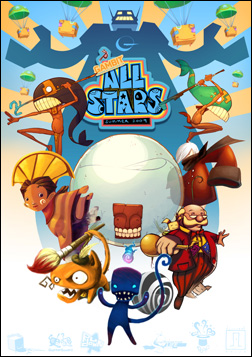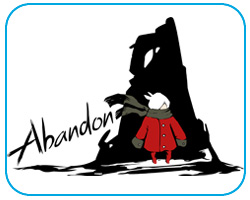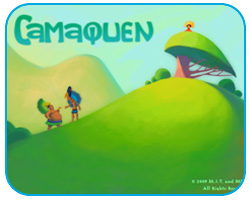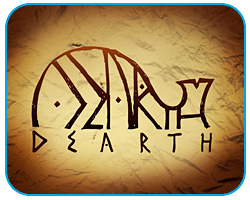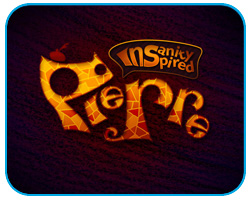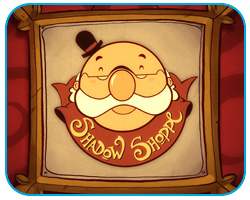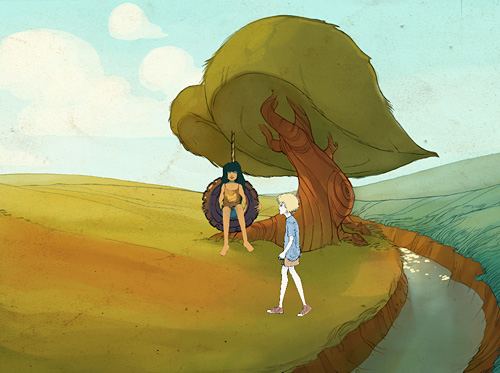|
|
Since the announcement that Futures of Entertainment 4 will focus on transmedia, since I’m actually on it (twice – check out August 24th and October 5th) and – most importantly – since Henry asked me to, I’m republishing Henry’s syllabus for the transmedia storytelling class he’s offering at USC this fall. The following post originally appeared at henryjenkins.org on August 11th; if you’re not already following Henry’s blog “Confessions of an Aca-Fan”, then I humbly suggest you have some bookmarking to do!
Here’s Henry’s post, republished in its entirety.
Transmedia Storytelling and Entertainment: A Syllabus
by Henry Jenkins
Given the interest out there in transmedia or cross-media entertainment, I thought I would share the syllabus for the course I am teaching this fall at the University of Southern California. I am still shifting some details, as I deal with the scheduling of guest speakers, but all of the speakers listed have agreed to come. The readings are a good starter set for people wanting to do more thinking on this emerging area of research. I will be sharing reflections about the course material here throughout the fall, since I’m sure working through these readings in a class context is going to spark me to do some fresh thinking on the topic. I’d love to hear from others out there teaching transmedia or cross-media topics.
If you know someone at USC who you think might want to take this class, let them know. I still have room for more students.
Course Description and Outcomes:
We now live at a moment where every story, image, brand, relationship plays itself out across the maximum number of media platforms, shaped top down by decisions made in corporate boardrooms and bottom up by decisions made in teenager’s bedrooms. The concentrated ownership of media conglomerates increases the desirability of properties that can exploit “synergies” between different parts of the medium system and “maximize touch-points” with different niches of consumers. The result has been the push towards franchise-building in general and transmedia entertainment in particular.
A transmedia story represents the integration of entertainment experiences across a range of different media platforms. A story like Heroes or Lost might spread from television into comics, the web, computer or alternate reality games, toys and other commodities, and so forth, picking up new consumers as it goes and allowing the most dedicated fans to drill deeper. The fans, in turn, may translate their interests in the franchise into concordances and wikipedia entries, fan fiction, vids, fan films, cosplay, game mods, and a range of other participatory practices that further extend the story world in new directions. Both the commercial and grassroots expansion of narrative universes contribute to a new mode of storytelling, one which is based on an encyclopedic expanse of information which gets put together differently by each individual consumer as well as processed collectively by social networks and online knowledge communities.
The course is broken down into five basic units: “Foundations” offers an overview of the current movement towards transmedia or cross-platform entertainment; “Narrative Structures” introduces the basic toolkit available to contemporary storytellers, digging deeply into issues around seriality, and examining what it might mean to think of a story as a structure of information; “World Building” deals with what it means to think of contemporary media franchises in terms of “worlds” or “universes” which unfold across many different media systems; “Audience Matters” links transmedia storytelling to issues of audience engagement and in the process, considers how fans might contribute unofficial extensions to favorite media texts; and “Tracing the History of Transmedia” pulls back to consider key moments in the evolution of transmedia entertainment, moving from the late 19th century to the present.
In this course, we will be exploring the phenomenon of transmedia storytelling through:
- Critically examining commercial and grassroots texts which contribute to larger media franchises (mobisodes and webisodes, comics, games).
- Developing a theoretical framework for understanding how storytelling works in this new environment with a particular emphasis upon issues of world building, cultural attractors, and cultural activators.
- Tracing the historical context from which modern transmedia practices emerged, including consideration of the contributions of such key figures as P.T. Barnum, L. Frank Baum, Feuillade, C.S. Lewis, J.R.R. Tolkien, Cordwainer Smith, Walt Disney, George Lucas, DC and Marvel Comics, and Joss Whedon.
- Exploring what transmedia approaches contribute to such key genres as science fiction, fantasy, horror, superhero, suspense, soap opera, teen and reality television.
- Listening to cutting-edge thinkers from the media industry talk about the challenges and opportunities which transmedia entertainment offers, walking through cases of contemporary projects that have deployed cross-platform strategies.
- Putting these ideas into action through working with a team of fellow students to develop and pitch transmedia strategies around an existing media property.
Required Books:
Pat Harrington and Noah Wardrip-Fruin, Third Person: Authoring and Exploring Vast Narratives (Cambridge: MIT Press, 2009), 636 pages.
Kim Deitch, Alias the Cat (New York: Pantheon, 2007), 136 pages.
Kurt Busiek and Alex Ross, Marvels (Marvel Comics, 2003), 216 pages.
Kevin J. Anderson (ed.), Tales from the Mos Eisley Cantina (New York: Spectra, 1995), 416 pages.
Joss Whedon, The Long Way Home (New York: Dark Horse, 2007), 136 pages.
All additional readings will be provided through the Blackboard site for the class.
Grading and Assignments:
Commercial Extension Paper: 20 percent
Grassroots Extension Paper: 20 percent
Final Project – Franchise Development Project: 40 percent
Class Forums: 20 percent
In order to fully understand how transmedia entertainment works, students will be expected to immerse themselves into at least one major media franchise for the duration of the term. You should consume as many different instantiations (official and unofficial) of this franchise as you can and try to get an understanding of what each part contributes to the series as a whole.
COMMERCIAL EXTENSION PAPER: For the first paper, you will be asked to write a 5-7 page essay examining one commercially produced media extension (comic, website, game, mobisode, amusement park attraction, etc.). You should try to address such issues as its relationship to the story world, its strategies for expanding the narrative, its deployment of the distinctive properties of its platform, its targeted audience, and its cultural attractors/activators. (Due Sept. 23)(20 Percent)
GRASSROOTS EXTENSION PAPER: For the second paper, you will be asked to write a 5-7 page essay examining a fan-made extension (fan fiction, discussion list, video, etc.) and try to understand where the audience has sought to attach themselves to the franchise, what they add to the story world, how they respond to or route around the invitational strategies of the series, and how they reshape our understanding of the characters, plot or world of the original franchise. (Due Nov. 18) (20 Percent)
FINAL PROJECT – FRANCHISE DEVELOPMENT PROJECT: Students will be organized into teams, which for the purpose of this exercise will function as transmedia companies. You should select a media property (a film, television series, comic book, novel, etc.) that you feel has the potential to become a successful transmedia franchise. In most cases, you will be looking for a property that has not yet added media extensions, though you could also look at a property that you feel has been mishandled in the past. By the end of the term, your team will be “pitching” this property. The pitch should include a briefing book that describes:
- the core defining properties of the property
- a description of the intended audience(s)
- a discussion of the specific plans for each media platform you are going to deploy
- an overall description for how you will seek to integrate the different media platforms to create a coherent world
- a business plan which includes likely costs and revenue and the time table for rolling out the various media elements
- parallel examples of other properties which have deployed the strategies being described
The pitch itself will be a 20 minute group presentation, followed by 10 minutes of questioning. The presentation should give us a “taste” of what the property is like as well as to lay out some of the key elements that are identified in the briefing book. For an example of what these pitches might look like, watch the materials assembled at http://www.educationarcade.org/SiDA/videos, which shows how a similar activity was conducted at MIT. Each member of the team will be expected to develop expertise around a specific media platform as well as to contribute to the over-all strategies for spreading the property across media systems. The group will select its own team leader who will be responsible for contacts with the instructor and will coordinate the presentation. The team leader will be asked to provide feedback on what each team member contributed to the effort, while team members will be asked to provide an evaluation of how the team leader performed. Team Members will check in with the instructor on Week Ten and Week Fourteen to review their progress on the assignment. Presentation (Dec.7, 9) Briefing Book (Dec. 14) (40 Percent)
CLASS FORUM: For each class session, students will be asked to contribute a substantive question or comments via the class forum on BlackBoard. Comments should reflect an understanding of the readings for that day as well as an attempt to formulate an issue that we can explore through class discussions or with the visiting speakers. (20 Percent)
Class Schedule:
*Guest Speakers are tentative, subject to availability. Shifts in speakers and thus topics and readings may occur after the semester starts.
Part One: Foundations
Week 1
August 24: Transmedia Storytelling 101
Henry Jenkins, “Transmedia Storytelling 101” Confessions of an Aca-Fan, http://henryjenkins.org/2007/03/transmedia_storytelling_101.html
Henry Jenkins, “Searching for the Origami Unicorn: The Matrix and Transmeda Storytelling,” Convergence Culture: Where Old and New Media Collide (New York: New York University Press, 2006), pp. 93-130.
Geoff Long, “What Is Transmedia Storytelling”, Transmedia Storytelling: Business, Aesthetics and Production at the Jim Henson Company, http://cms.mit.edu/research/theses.php, pp. 13-69.
August 26 Intertextual Commodities?
P. David Marshall, “The New Intertextual Commodity” in Dan Harries (ed.) The New Media Book (London: BFI, 2002), pp. 69-81.
Derek Johnson, “Intelligent Design or Godless Universe? The Creative Challenges of World Building and Franchise Development,” Franchising Media Worlds: Content Networks and The Collaborative Production of Culture, PhD Dissertation, University of Wisconsin-Madison, 2009. pp.170-279.
Watch: Battlestar Galactica: The Face of the Enemy
Week 2
August 31: Media Mix in Japan
Anne Allison, “Pokemon: Getting Monsters and Communicating Capitalism,” Millennial Monsters: Japanese Toys and the Global Imagination (Berkeley: University of California Press, 2006), pp. 192-233.
David Buckingham and Julian Sefton-Green, “Structure, Agency and Pedagogy in Children’s Media Culture” In Joseph Tobin (ed.) Pikachu’s Global Adventure: The Rise and Fall of Pokemon (Durham: Duke University Press, 2004), pp. 12-33.
Mizuko Ito, “Gender Dynamics of the Japanese Media Mix,” Beyond Barbie and Mortal Kombat: New Perspectives on Gender and Gaming (Cambridge, MIT, 2008), pp. 97-110.
September 2: Toys and Tales
Jeff Gomez, “Creating Blockbuster Worlds” (unpublished)
Henry Jenkins, “Talking Transmedia: An Interview with Starlight Runner’s Jeff Gomez,” Confessions of an Aca-Fan, http://www.henryjenkins.org/2008/05/an_interview_with_starlight_ru.html
Mark Federman, “What is the Meaning of the Medium is the Message,” http://individual.utoronto.ca/markfederman/article_mediumisthemessage.htm
Guest Speakers:
Jeff Gomez, Starlight Runner
Jordan Greenhill, DivX
Week 3
September 7 is the Labor Day holiday
September 9: Transmedia Branding
Faris Yacob, “I Believe Children are the Future,” http://www.slideshare.net/NigelG/ipa-thesis-i-believe-the-children-are-our-future
Henry Jenkins, “How Transmedia Storytelling Begat Transmedia Planning…”, Confessions of an Aca-Fan, http://henryjenkins.org/2006/12/how_transmedia_storytelling_be.html
http://henryjenkins.org/2006/12/how_transmedia_storytelling_be_1.html
Guest Speaker: Faris Yacob, McCann Erickson New York
Week 4
September 14 Heroes and Alchemists: The New Storytelling
The 9th Wonders, Chapters 1-9 http://www.nbc.com/Heroes/novels/novels_library.shtml?novel=9
Henry Jenkins, “We Had So Many Stories to Tell’: The Heroes Comics as Transmedia Storytelling,” Confessions of an Aca-Fan, http://henryjenkins.org/2007/12/we_had_so_many_stories_to_tell.html
Carolyn Handler Miller, Digital Storytelling: A Creator’s Guide to Interactive Entertainment (Amsterdam: Focal Press, 2006), “Using a Transmedia Approach”, pp. 149-164 (Rec.)
Guest Speakers: Mauricio Mota, Mark Warshaw, Here Come the Alchemists
Part Two: Narrative Structures
September 16: Seriality
Angela Ndalianis, Neo-Baroque Aesthetics and Contemporary Entertainment (Cambridge: MIT Press, 2004), “Polycentrism and Seriality: (Neo-)Baroque Narrative Formation,” pp. 31-70.
Jason Mittell, “All in the Game: The Wire, Serial Storytelling and Procedural Logic” (Harrington and Wardrip-Fruin, pp. 429-438.
Watch: The Wire
http://www.amazon.com/Wire-Complete-Fourth-Season/dp/B000QXDJLI/ref=pd_bbs_sr_1?ie=UTF8&s=dvd&qid=1197321529&sr=8-1
“Young Prop Joe”
“Bunk and McNulty”
“Young Omar”
Jennifer Haywood, Consuming Pleasures: Active Audiences and Serial Fictions from Dickens to Soap Opera (University of Kentucky Press, 1997), “Mutual Friends: The Development of the Mass Serial,” pp. 21-51. (rec)
Week 5
September 21: Soaps Go Transmedia
Sharon Marie Ross, “Managing Millennials: Teen Expectations of Tele-Participation,” Beyond the Box: Television and the Internet (London: Blackwell, 2008), pp. 124-172.
Sam Ford, “From Oakdale Confidential to L.A. Diaries: Transmedia Storytelling for ATWT,” As the World Turns in a Convergence Culture (Master’s Thesis), pp. 141-162.
Louisa Stein, “Playing Dress Up: Digital Fashion and Game Extensions of Televisual Experience in Gossip Girl‘s Second Life,” Cinema Journal, pp. 116-122.
Watch: Gossip Girl: Tales From the Upper East Side
http://www.cwtv.com/thecw/gossip-girl-tales-from-the-upper-east-side
LA Diaries
http://www.cbs.com/daytime/specials/la_diaries/episodes.php
September 23: Creating Alternate Realities
Christy Dena, “Emerging Participatory Culture Practices: Player-Created Tiers in Alternate Reality Games,” Convergence, February 2008, pp. 41-58.
Jane McGonigal, Why I Love Bees: A Case Study in Collective Intelligence Gaming.” Ecologies of Play. Ed. Katie Salen. (Cambridge: MIT Press, 2008), pp. 199-228. http://www.mitpressjournals.org/doi/pdfplus/10.1162/dmal.9780262693646.199
Dave Szulborski, “Puppetmastering: Creating a Game” and “Puppetmastering: Running a Game,”This Is Not A Game: A Guide to Alternate Reality Gaming (New York: New Fiction, 2005), pp. 207-284.
Guest Speaker: Evan Jones, Stitch Media
COMMERCIAL EXTENSION PROJECT DUE
Week 6
September 28: Speaking of Serials
Kim Deitch, Alias the Cat (New York: Pantheon, 2007) (Required Book)
David Kalat, “The Long Arm of Fantomas” (Harrington and Wardrip-Fruin), pp. 211-225.
September 30: The Unfolding Text
Neil Perryman, “Doctor Who and the Convergence of Media: A Case Study in Transmedia Storytelling,” Convergence, February 2008, pp. 21-40.
Lance Perkin,”Truths Universally Acknowledged: How the ‘Rules’ of Doctor Who Affect the Writing,” (Harrington and Wardrip-Fruin), pp. 13-24.
Matt Hills, “Absent Epic, Implied Story Arcs, and Variations on a Narrative Theme: Doctor Who (2005) as Cult/Mainstream TV,” (Harrington and Wardrip-Fruin), pp. 333-343.
Part Three: World-Building
Week 7
October 5: Migratory Characters
William Uricchio and Roberta E. Pearson, “I’m Not Fooled By That Cheap Disguise,” in Roberta E. Pearson, The Many Lives of the Batman: Critical Approaches to A Superhero and His Media (New York: Routledge, 1991), pp. 182-213.
Will Brooker, “Establishing the Brand: Year One,” Batman Unmasked: Analyzing a Cultural Icon (London: Continuium, 2001), pp. 36-67.
Bob Kane, “The Legend of the Batman” (1938) and Bob Kane, “The Origins of the Batman,” (1948) in Dennis O’Neil (ed.) The Secret Origins of the DC Superheroes (New York: DC, 1976), pp. 36-50.
Bob Kane, “The First Batman” (1956) and Dennis O’Neil, “There Is No Hope in Crime Alley,” (1978) The Greatest Batman Stories Ever Told (New York: DC, 1988).
Guest Speaker: Geoffrey Long, GAMBIT
October 7: World Building in Comics
Matthew J. Pustz, Comic Book Culture: Fanboys and True Believers (Jackson: University of Mississippi Press, 1999), pp. 129-133.
Jason Bainbridge, “Worlds Within Worlds: The Role of Superheroes in the Marvel and DC Universe,” Angela Ndalianis (ed.), The Contemporary Comic Book Superhero (New York: Routledge, 2008) pp. 64-85.
Sam Ford and Henry Jenkins, “Managing Multiplicity in Superhero Comics,” (Harrington and Wardrip-Fruin), pp. 303-313.
Kurt Busiek and Alex Ross, Marvels (New York: Marvel Comics, 1993) (Required Book)
Alec Austin, “Hybrid Expectations, Expectations Across Media, CMS Thesis, pp. 97-127.
Week 8
October 12: Who Watches the Watchman?
Stuart Moulthrop, “See the Strings: Watchmen and the Under-Language of Media” (Harrington and Wardrip-Fruin), pp. 287-303.
Watch:
NBS Nightly News With Ted Philips http://www.youtube.com/watch?v=nd5cInmK6LQ&playnext_from=PL&feature=PlayList&p=878F6464EEBE32F9&index=10
The Keene Act and YOU http://www.youtube.com/watch?v=qkWGZ1G7TAE&playnext_from=PL&feature=PlayList&p=878F6464EEBE32
Saturday Morning Watchmen
http://www.youtube.com/watch?v=YDDHHrt6l4w
Guest Speaker: Alex McDowell, Production Designer, Watchmen
October 14: World Building in Science Fiction
Walter Jon Williams, “In What Universe?” (Harrington and Wardrip-Fruin), pp. 25-32.
George R.R. Martin, “On the Wild Cards Novels,” in Pat Harrington and Wardrip-Fruin (eds.) Second Person: Role-Playing and Story in Games and Playable Media (Cambridge: MIT Press, 2007).
Cordwainer Smith, “The Dead Lady of Clown Town,” and “The Ballad of Lost C’mell,” J. J. Pierce (ed.) The Best of Cordwainer Smith (New York: Del Rey, 1975), pp. 124-209, pp. 315-337.
Week 9
October 19: Launching a New World
David Lavery, “Lost and Long-Form Television Narrative” (Harrington and Wardrip-Fruin),
pp. 313-323.
Guest Speaker: Jesse Alexander, Executive Producer, Year One
October 21: Transmedia and Social Change
TBA
Guest Speaker: Bram Pitoyo, Wild Alchemy
Part Four: Audiences
Week 10
October 26: The Logic of Engagement
Ivan Askwith, “The Expanded Television Text, “Five Logics of Engagement,”; “Lost at Televisions’ Crossroads,” Television 2.0: Reconceptualizing TV as an Engagement Medium, CMS thesis, pp. 51-150.
Guest Speaker: Ivan Askwith, Big Spaceship
October 28:
Expanding the Audience
Kim Moses and Ian Sander, selections from Ghost Whisperer: The Spirit Guide (New York: Titan Books, 2008).
Guest Speaker: Kim Moses, Executive Producer, The Ghost Whisperer
Week 11
November 2: Fan Productivity
Jesse Walker, “Remixing Television: Francesca Coppa on the Vidding Underground,” Reason, August/September 2008, http://www.reason.com/news/show/127432.html
Francesca Coppa, “Women, Star Trek, and the Early Development of Fannish Vidding,” Transformative Works and Cultures (2008), http://journal.transformativeworks.org/index.php/twc/article/view/44/64
Bud Caddell, “Becoming a Mad-Man,” http://drop.io/becomingamadman
November 4: The Encyclopedic Impulse
Janet Murray, “Digital Environments are Encyclopedic,” Hamlet on the Holodeck: The Future of Narrative in Cyberspace (Cambridge: MIT Press, 1997), pp. 83-90.
Bob Rehak, “That Which Survives: Star Trek‘s Design Network in Fandom and Franchise” (Unpublished), pp. 2-79.
Robert V. Kozinets, “Inno-Tribes: Star Trek as Wikimedia” Consumer Tribes (London: Butterworth-Heinemann, 2007), pp. 194-209.
Watch:
Star Trek: Phase II “In Harms Way”
http://www.startreknewvoyages.com/episodes.html
Week 12
November 9: The Power of Details
Kristin Thompson, “Not Your Father’s Tolkien” and “Interactive Middle Earth,” The Frodo Franchise: The Lord of the Rings and Modern Hollywood (Berkeley: University of California Press, 2007), pp.53-74, p. 224-256
C.S. Lewis, “On Stories,” Of Other Worlds: Essays and Stories (New York: Harvest, 2002), pp. 3-21.
November 11: Ephemeral Fascinations
Michael Bonesteel, “Henry Darger’s Search for the Grail in the Guise of a Celesttial Child” (Harrington and Wardrip-Fruin), pp. 253-267.
Amelie Hastie, “The Collector: Material Histories, Colleen Moore’s Dollhouse, and Ephemeral Recollection,” Cupboards of Curiosity: Women, Recollection, and Film History (Durham: Duke University Press, 2007), pp. 19-72.
Week 13
November 16 Independent Horrors
James Castonguay, “The Political Economy of the Indie Blockbuster: Fandom, Intermediality, and The Blair Witch Project,” in Sarah L. Higley and Jeffrey Andrew Weinstock (eds.) Nothing That Is: Milllennial Cinema and the Blair Witch Controversies (Detroit: Wayne State University, 2004), pp. 65-86.
The Blair Witch Project Website http://www.blairwitch.com/
Head Trauma Website http://www.headtraumamovie.com/
Guest Speaker: Lance Weiller, Head Trauma
Part Five: Tracing the History of Transmedia
November 18: Before the Rainbow
Neil Harris, “The Operational Aesthetic,” Humbug: The Art of P.T. Barnum (Chicago: University of Chicago Press, 1973), pp. 59-90.
Mark Evan Swartz, “A Novel Enchantment,” Before the Rainbow: L. Frank Baum’s The Wonderful Wizard of Oz on Stage and Screen to 1939 (Baltimore: Johns Hopkins University Press, 2000), pp. 161-172.
Week 14
November 23: What Uncle Walt Taught Us
J.P. Telotte, Disney TV (Detroit: Wayne State, 2004), pp. 1-91.
Karal Ann Marling, “Imagineering the Disney Theme Parks,” in Karal Ann Marling (ed.) Designing Disney’s Theme Parks: The Architecture of Reassurance (Montreal: Centre Canadian d’Architecture, 1997), pp. 29-178. (Rec.)
November 25: Franchises and Attractions
Henry Jenkins, “The Pleasure of Pirates And What It Tells Us About World Building in Branded Entertainment”, Confessions of an Aca-Fan, http://henryjenkins.org/2007/06/forced_simplicity_and_the_crit.html
Don Carson, “Environmental Storytelling: Creating Immersive 3D Worlds Using Lessons Learned from the Theme Park industry,” Gamasutra, http://www.gamasutra.com/features/20000301/carson_pfv.htm
Week 15
November 30: Lessons From Lucas
Jonathon Gray, “Learning to Use the Force: Star Wars Toys and Their Films,” Show Sold Separately (Forthcoming), pp. 232-247.
Will Brooker, Using the Force: Creativity, Community and Star Wars Fans (New York: Continuum, 2002), “The Fan Betrayed,” pp. 79-99, “Canon,” pp. 101-114.
Kevin J. Anderson (ed.), Tales from the Mos Eisley Cantina (New York: Spectra, 1995) (Required Book)
December 2: Across the Whedonverse
Tanya Krzywinska, “Arachne Challenges Minerva: The Spinning Out of Long Narrative in World of Warcraft and Buffy the Vampire Slayer” (Harrington and Wardrip-Fruin), pp. 385-399.
Joss Whedon, The Long Way Home (New York: Dark Horse, 2007) (Required Book)
Watch:
Dr. Horrible’s Sing-Along Blog
http://www.hulu.com/watch/28343/dr-horribles-sing-along-blog
December 7 Student Presentations
December 9 Student Presentations

After several long, glorious months of chaos, code and camaraderie, GAMBIT is proud to unveil our Summer 2009 GAMBIT Prototypes! This year we’ve highlighted the research questions for each of our games so our players get a greater idea of the thinking behind each project – and there’s some genuinely amazing research in these games. For example:
- Abandon uses some new automated rigging software to fill the screen with animated objects
- Camaquen explores new interfaces for affecting character conversation in games
- Dearth examines how to create AI-controlled sidekicks automatically
- Pierre: Insanity Inspired looks at how players deal with failure
- Shadow Shoppe examines the character attributes we assign to people based on only their silhouettes
- Waker and Woosh are two educational games sharing the same mechanics but offering different experiences – story versus abstract – to examine how these experiences affect student engagement
Here’s the rundown of all the summer 2009 GAMBIT prototypes!
Abandon
Abandon is a game about running away. Step into the shoes of a girl lost in a surreal dreamscape, and escape from the encroaching darkness before it consumes everything, including you. Objects strewn about this dream world are brought to life by your light, but they seek only to bring darkness. No place is safe. Can you abandon these objects; can you abandon the night? Or are you the one who has been abandoned and left… alone?
Abandon showcases a large array of animated objects. The development team utilized experimental, automated rigging software to enable rapid creation of animated models. The direction for the project was motivated by the desire to create a game featuring a large number of unique animated models, not normally feasible with a small team size and short development time frame. The team strived to create a world for the player where just about anything can come to life.
Camaquen
Camaquen is a casual puzzler in which players guide two characters through a heated argument. As part of a research project examining user interfaces for conversation in games, Camaquen models the effect of emotions in dialogue, enabling players to affect the emotional dynamics of the conversation and thus affect the outcome of the characters’ debate – even though the script remains the same. The actions of the player interact with the personalities of the brothers to determine one of five different Fates.
Players take on the role of Alux (Ah-loosh), the guardian spirit of the Sacred Grove. When the Great King dies and his kingdom is split between his sons Ban Amaru (Bahn A-mah-roo) and Huamanapu (Wah-nam-a-pu), the brothers begin to bicker over what to do with the Grove. Using Alux’s ability to command spirits of emotional energy (or "camaquen"), players change the meaning behind their words and sway the two kings to their destiny.
Does Huamanapu build his enormous stargazing tower, or does Ban Amaru move forward with his plans for a golden palace? And what happens to Alux when her Grove is transformed?
Dearth
Dearth is an exciting co-operative action-puzzler. The Tribal Lands have been suffering through the worst drought in many lifetimes. Plant life is withering away, and people fear the approach of a great famine. Rumors spread of the awakening of monstrous creatures who the ancestors warned would one day rise to drain the land and its people of their water. As the thirsty beasts emerge, worried villagers turn to the Tribal Lands’ two great shamans and ask them to restore the water to the land.
Play as the tribal shamans. Force the mysterious water-sucking creatures to smash into each other, allowing stolen water to gush from their engorged bodies and be returned to the land. Plan movements with your partner carefully or be ready to make split-second decisions if things don’t go according to plan. The future of the Tribal Lands will depend on how well you work together!
Pierre: Insanity Inspired
Pierre is a cat. Pierre is also an artist.
On the verge of creating his greatest masterpiece, Pierre suddenly runs out of inspiration. Undaunted, he sets out to recover his lost creativity – but the path to completing his magnum opus is treacherous and filled with both dangerous obstacles and equally dangerous critics. Can he survive the challenge? Will Pierre finish his grand masterpiece? Who knows? The only thing certain is that Pierre is one strong-headed feline.
Pierre: Insanity Inspired is a unique combination of action and puzzle-solving. Players guide Pierre around a spinning circular platform to collect inspiring items, but only when they align with the right symbols! Making matters worse, Pierre must dodge falling spiked balls and – like all great artists – contend with the critics’ gentle encouragements or savage insults.
Can you help Pierre finish his noble sculpture before he’s driven completely insane?
Shadow Shoppe
Welcome to the Shadow Shoppe, located in a small town where people have lost their shadows.
As a temporary apprentice to the shadowmaker, your goal is to help create and return the shadows to your townspeople so that life can go back to the way it was.
To create complete shadows, you must pick the most suitable word out of those presented to you. When a customer request (or requests) comes in, these shadows are revealed again. This time round, you have to pick the shadow that best suits the customer’s description.
Are you up for the challenge?
Waker
Waker is a puzzle/platform game set in the world of a child’s broken dream. As the Waker, the player uses both mind and reflexes to solve puzzles, creating platforms to form a safe path through the dream worlds. Forming the paths, however, is the trick – it is up to the player to figure out how to create each path, and to manipulate the Waker and the world to travel safely through each level. With dynamic obstacles and three difficulty modes, the game offers continuing challenges even for experienced players, while allowing beginners an easier path to the end.
Waker was developed in tandem with Woosh, its abstract variant. Waker offers the same gameplay as Woosh, but also includes a rich narrative and a story that is reflected in its art and cutscenes.
Come explore the world of dreams. Will you awaken your dreamer, or leave her to drift forever?
Woosh


Woosh is a challenging puzzle/platform game that engages players in twelve levels of ever-increasing difficulty. Using concepts from physics, players draw platforms to explore the abstract world of Woosh and encounter dynamic obstacles and other challenges along the way. Woosh features three levels of difficulty: perfect for experienced platform players and more casual players alike.
Woosh was developed in tandem with Waker, its narrative version. Both games are intended as educational games for middle and high school students (age 12 and up), to complement an introductory physics class.
Do you have the wits, agility and finesse to play Woosh?
So what are you waiting for? Get going! Get downloading! Get playing! Let us know what you think – leave us a comment, email us, tweet about us, or post about us on your blogs and Facebook! Check out the bios of the developers behind these games in Credits and be sure to check back here on our blog as we start posting their thoughts and postmortems! But most of all, have fun!

This past weekend I was fortunate enough to join my friends MaurÃcio Mota and Mark Warshaw of The Alchemists (also here) as an invited speaker at the Descolagem lecture series in Rio de Janeiro, Brazil. Our hosts were Roberto “Beto” Largman and Marcia Oliveira, the founders of the Descolagem series and two genuinely warm and wonderful souls. (For example, Beto and I had a really fantastic discussion about the Spider-Man comics and films, video games and video game television shows, and the merits of various e-mail clients in the car on the way to the airport on Sunday, and I’m now coaxing him to come up for Futures of Entertainment 4 in November so we can continue the debate.)
The event was positively brilliant. The venue for the event was called Nave, or the Núcleo Avançado em Educaçáo – which was a public school that had been adopted by Oi Futuro, a division of one of Brazil’s largest phone companies that is dedicated to the advancement of arts, education and culture. Nave is the kind of school that I would have dreamed of attending, if I’d known such a thing were possible – walking in, I was struck by how much the place resembled a design studio or an arts gallery more than a school. The space for the event inside of Nave was equally breathtaking: Beto and Marcia had arranged for a space about the size of a small indoor basketball court to be decorated with really impressive pixel art and dozens of LCD displays, with a digital campfire made up of about a dozen smaller displays arranged in a tower in the center of the floor. Surrounding the campfire was about a hundred bright red beanbag chairs, with four bigger beanbag chairs set up on one side for the four of us speakers. The result was the coolest classroom I’d ever seen, with multiple video cameras recording the event, casting us onto the LCD screens around the room so everyone had a good view, and streaming it online both into the overflow space in the lobby and across the Web into homes around the world. When we first walked in, the screens were all displaying the same video footage playing on the campfire, so there was a brief and unsettling sensation of walking into a burning building, but then we settled into the beanbag chairs and we were off to the races.
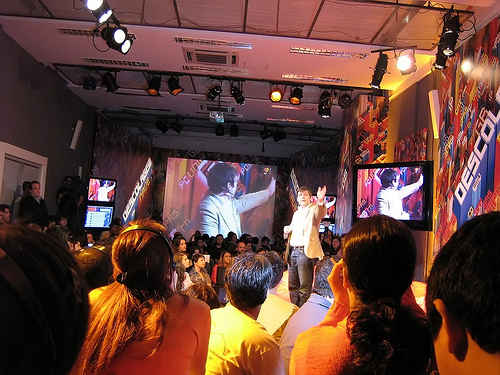 Me at Descolagem, courtesy of Emerson Alecrim Me at Descolagem, courtesy of Emerson AlecrimAfter Beto introduced us, MaurÃcio kicked things off with a long, passionate description of the nature of transmedia storytelling, how he came to discover Henry Jenkins, C3 and our work, and how he saw transmedia storytelling having an impact on Brazil. (Luckily, the hosts had given Mark and I headsets so the translators could give us the English versions of what Beto and MaurÃcio were saying.) After that, I was up, and I gave a revised version of my transmedia lecture, including a new section on how transmedia storytelling can be used in education. This was an even more advanced version of the talk I gave at Carnegie-Mellon earlier this year, but I was in the weird position of having to go faster than anticipated (since we started late due to a technical glitch) but having to talk much slower than usual (to accommodate the unfortunate translator). The results were a little more wobbly than I would have liked, but people seemed to have loved it and were excited by it, and that’s what’s important. After I was done, Mark rounded out the show, telling tales of his experiences as a transmedia producer on Heroes and Smallville and giving the audience a taste of what The Alchemists are cooking up now. We ran really late, but a bunch of people stuck around to talk with us afterwards and no one seemed particularly pissed, so, all things considered, I’d definitely call that talk a solid win.
As for the rest of the trip, although the weather was mostly gray and rainy, MaurÃcio proved himself as a terrific tour director. He and his friend (and fellow Alchemist) Rafael showed Mark and I around town, pointing out sites both publicly interesting (the Christ, Sugarloaf) and privately important (the parts of the city where MaurÃcio’s family lived, fantastic places to eat and shop and walk). We gave another presentation at one of C3’s new partner companies that was also terrifically well received, we joined MaurÃcio’s sister and girlfriend at a late-night samba concert in the shadows of an ancient aqueduct that was mind-blowingly cool, and we ate an unbelievable amount of really, really great food. (I’d always heard that Brazil has great beef, but I come from the middle of cow country in Ohio, so I always blew that off. I can now say that, yes, Brazil has some damn great beef.) On Sunday the sun finally came out, so I got to spend a little time walking along the beach near our hotel in Ipanema, which was just down the street from Copacabana. Those songs will never be quite the same to me again – they will now sound even better, now that I’ve seen these places for myself. The beach was amazing, with enormous waves crashing in, islands and massive tanker ships off on the horizon, and the mountains wrapping around the edges of the bay. Dozens of characters wandered the beach, including one guy who looked for all the world like he was ranting about the coming apocalypse in Portuguese while people practiced the apparently global standard reaction of ignoring him, and a group of four guys were playing a variant of volleyball that I can only guess was a form of futbol practice, since none of them were using their hands. (Imagine a weird cross of soccer, volleyball and hacky-sack and you’ll get the gist of it.) As my last minutes in Brazil ticked away before I had to leave for the airport, I sat on the beach and watched the people, the mountains, the city and the waves. I felt the cool breeze on my skin and the sun on my face and I chuckled about how blessed MaurÃcio, Beto and Marcia were to live in a part of the world where this was their winter.
I finally arrived back in Boston yesterday morning, tired and glad to see my fiancée again, but also really happy. Brazil was amazing, the Brazilians were wonderful to me, and I’m glad to have made so many great friends while down there. I’ll upload some photos to my Flickr account shortly and see what I can do about uploading my slides. Meanwhile, you can see some photos of the event on Flickr by searching for photos tagged with ‘descolagem’, which will turn up things like this terrific set by Emerson Alacrim; you can see what people have been tweeting about the event by searching for #descolagem at Twitter; and I’m sure video clips will be popping up somewhere. I also have a couple interesting things afoot, so hopefully I’ll have some more interesting posts coming up here on this blog in the near future. As always, stay tuned!

The window is closing for all interested parties to get their names included in Interfictions 2, the upcoming second anthology of interstitial fiction from The Interstitial Arts Foundation, which includes a foreword from none other than one Henry Jenkins. Here’s the official update from IAF funding goddess Erin Underwood:
The Interstitial Arts Foundation has extended the date to July 31, 2009 for
making your donation of $200 or more to get your name printed in the
Acknowledgements section of Interfictions 2. The deadline is only a couple
of days away, but it’s not too late to make your gift.
The easiest way to give is by visiting the IAF web site:
http://www.interstitialarts.org/donate
Your support is very important to the IAF and to Interfictions 2. Thank you
for your help!
You heard the woman! Go! Go!

A few months ago, I had the honor of organizing and moderating a keynote panel for the sixth Media in Transition conference here at MIT. Our title (and topic) was “The Future of Publishing”, and MIT World has just published the video recording of it online. I’ve embedded a copy of it here (all 94 minutes of it, be warned):
My honorable speakers are described on the site as follows:
Small Beer Press, Gavin Grant’s boutique Massachusetts publishing company, “is still in the business of producing paper objects.” But new technologies are transforming his work in several ways: He licenses some books via Creative Commons; releases others as downloads in a variety of ebook formats (generating these can be an expensive “hassle”); and deploys social media, in the form of blogs and Facebook-enabled communication, to publicize and attract passionate readers to the firm’s website. Grant sees Amazon and its Kindle as a bully driving readers toward best sellers, and is interested in the “hyperlocal” possibilities of the web for publishing: finding readers for his one-of-a-kind publications, and inviting them to peruse his non-mainstream book lists.
Agent Jennifer Jackson describes some intriguing direct marketing activities made possible by the web, including author-produced book trailers on YouTube, and an online media project undertaken by clients and other authors: a website consisting of episodes for a fictional TV show. Jackson also maintains blogs that she hopes provide “transparency” about her end of the business, a way to bridge “the great divide” between agents and authors. Her authors are concerned with digital piracy but Jackson feels wide distribution of an author’s work ends up generating more sales over time.
Robert Miller’s frustration with the trade publishing model — in particular, astronomical advances to authors, and book return rates of 40% — led to HarperStudio (a Harper Collins offshoot). His notion of “starting something from scratch” involves making digital and physical books available simultaneously to the reader. His first offering is a collection of previously unpublished pieces by Mark Twain that are available as individual books, or in discounted bundles with audio books and downloadable books. He celebrates the reduction in production costs in moving to digital, but he’s wary of the small but rapidly expanding ebook market, which he anticipates will impose a “downward pressure on prices,” a loss of revenue that will negatively impact his business.
Bob Stein envisions a wholesale evolution of the essence of books, from objects to “a place where readers and sometimes authors congregate.” His Institute on the Future of the Book hosts experiments in publishing, such as one where an author essentially blogs and moderates responses around a particular subject. Readers could someday collaborate with dead authors, adding chapters to finished books, for instance. He sees ebooks as transitional: “The experiments which have to do with increasing sales of book are interesting, and will prolong publishing but won’t invent the future of how humans work together to increase our knowledge, which is what publishing used to do.” These new expressive forms won’t emerge quickly. It took 300 years after the invention of the printing before the first novel was written, he notes, but inexorably, “we’re shifting the ways humans communicate with each other.”
My panelists delivered on the promise of the topic beautifully, providing terrific insight into the state of the publishing industry and what the future may have in store for all of us. A sort-of follow-up to the talk will be going down in November, when none other than Jeff VanderMeer will be coming to MIT to speak on a similar topic, which he addresses at great length in his upcoming book Booklife (Oct. 15, 2009; Tachyon Publications).
Added bonus: I now have a profile on MIT World. Next stop: TED…

GAMBIT’s high-flying CarneyVale: Showtime is about to hit a new height: appearing as one of the 10 best games of 2009 at the Penny Arcade Expo!
According to Gamasutra’s Leigh Alexander:
Organizers have chosen the 10 best games from over 150 submissions to be showcased at Penny Arcade’s PAX consumer event this year, including CarneyVale: Showtime and Osmos.
Now in its second year, the PAX 10 is designed to highlight the efforts of indie game creators working on original, self-funded and self-published, fully playable, non-mod game projects across all platforms.
The developers of the top ten games will be given four exhibitor passes each to the Penny Arcade Expo to be held September 4 to 6, and will showcase the games in a special booth at the show.
The PAX 10 selections are as follows:
CarneyVale: Showtime by the Singapore-MIT GAMBIT Game Lab (Xbox 360)
Closure by Tyler Glaiel and Jon Schubbe (PC)
Fieldrunners by Subatomic Studios (iPhone)
Liight by Studio Walljump (Wii)
Machinarium by Amanita Design (PC)
Osmos by Hemisphere Games (PC)
Puzzle Bloom by Team Shotgun (PC)
Tag: The Power of Paint by Tag Team (PC)
Trino by Trinoteam (Xbox 360)
What is Bothering Carl? by Story Fort (PC)
PAX, organized by popular Penny Arcade comic creators Jerry “Tycho” Holkins and Mike “Gabe” Krahulik, first featured the PAX 10 last year, with finalists whittled down from more than 80 submissions. Last year, Expo attendees chose Twisted Pixel’s The Maw as the overall champion.
As longtime fans of Gabe and Tycho, what can we say other than… Woo-hoo!

This weekend is Readercon, one of my favorite conferences in the world and, although this is only my second, one I’ve all but sworn never to miss. I love the people, the panels, the bookshop (especially the bookshop) and the level of conversation that happens here, wide-ranging debates that cover everything that has to do with fantasy, science fiction, horror and other genre-esque types of storytelling.
Yesterday I had the immense pleasure of getting to meet Peter Straub, who edited a collection of short fiction last year called Poe’s Children: The New Horror. This text was one of the bases for a paper I wrote for the American Comparative Literature Association conference this spring at Harvard, which was accepted but, due to a travel and scheduling snafu, was never presented. As it turns out, I’m glad I didn’t, because after talking to Straub yesterday it was revealed that the book’s subtitle, “the new horror”, was tacked on by the marketing department to move copies and wasn’t an assertion of a new movement after all – which, as it turns out, appears to also have been the case with the term “the new wave fabulists”, which was tacked on to Straub’s edited issue of Conjunctions. Although the panel Straub was on spoke extensively about the prevalence of dread as a mechanic in horror, when I asked if they had seen an uptick in the amount of dread-centric horror after 9/11, the answer was a largely unanimous no – although there has appeared to be a rise in the amount of ghost stories where the ghosts don’t realize they’re dead, which can either be read as a type of mechanic for trying to parse surviving 9/11, a la ‘survivor’s guilt’, or as the result of such cultural blockbusters as The Others or The Sixth Sense.
I asked Straub if he would be so kind as to allow me to interview him over e-mail, which he graciously agreed to do, so at some point in the future I’ll publish the results of that conversation somewhere. Until then, though, I’d like to archive my original essay here in all of its wrongheaded glory. As you’ll notice, this was written A.) when I thought that I was going to be presenting at the very end of the day on a Friday night, B.) as a more-or-less transcript of what I planned to say, and C.) while I was still attempting to chart out the differences between the New Weird, the New Horror, Slipstream and Interstitial. Since writing it, I’ve changed my mind about almost all of it.
Let me stress that again: this essay is almost completely and utterly wrong. Still, it’s that very wrongness that makes me think that it may serve as a great place to spark some Readercon-esque conversations. So have at it! Shred it, disembowel it, go to town. Perhaps some insight might be gleaned from its autopsy. For my part, I’m about to shower up and go hear John Clute speak about the possible origins of the superhero in literature.
God, I love Readercon.
FROM HORRORISM TO TERRORISM: THE NEW WEIRD, THE NEW HORROR AND THE WAR ON TERROR
Geoffrey Long
2009 American Comparative Literature Association Conference
20-25 minute lecture
I. Introduction
Hello, everybody. Thank you for coming, and I’d also like to thank the ACLA in general and Juan Ramos from the University of Massachusetts Amherst in particular for including me in this discussion. I recognize that it’s been a long and intellectually rigorous day, and that my talk is the last thing standing between you and either dinner or a growler of beer over at John Harvard’s, so again -Â thank you.
The title of this talk is “From Horrorism to Terrorism: the New Weird, the New Horror and the War on Terror.” A great deal of what follows is still largely preliminary and somewhat nebulous, so please – I heartily welcome any and all feedback, suggestions and counterarguments that can help me direct this Prolegomena on a Future Criticism into a stronger direction or future research.
Since the turn of the millennium, literature and culture have both taken a marked turn for the strange. Texts like Cormac McCarthy’s The Road, Magaret Atwood’s Oryx and Crake, and Alice Sebold’s The Lovely Bones> all take elements of the fantastic or the supernatural and weave them into what would be considered otherwise “mainstream” literature. Meanwhile, “genre” fiction is busily attacking the same borders from the other side, with authors such as China Miéville, Peter Straub, Jonathan Carroll, and Jeffrey VanderMeer taking pickaxes and shovels to these distinctions. What is going on here?
This paper will examine whether or not it is possible to read all of this genre-bending as due to a combination of, first, 9/11 and the War on Terror, second, a form of post-millennial confusion, and third, an increased degree of comfortability with decategorization in our culture, by way of considering four interrelated new splinter groups within the larger genres of fantasy, sci-fi and horror: the New Weird, the New Horror, Slipstream, and Interstitial.
II. Possible Causes
In his introduction to a recent edition of H.P. Lovecraft’s At the Mountains of Madness, one of the defining texts of what I’ll be referring to as the Old Weird, the author China Miéville, one of the defining authors of what I’ll be referring to as the New Weird, notes that the rise of the Old Weird was tied largely to the rise of popularity in fantasy and the supernatural following World War I:
The fantastic has always borrowed enthusiastically from premodern folklore, fairy tales, and myth, of course. Fantasy as a genre is a modern literature, however, born primarily out of the Gothic, a kind of bad conscience of the burgeoning “intrumental rationality” of capitalist modernity. “The dream of reason,” as José Monléon persuasively points out (quoting the title of Goya’s famous picture), “brings forth monsters.” In essence, for fantasy to be fantasy, to break down the barriers that were keeping the irrational at bay, society first had to construct those barriers and thoroughly embrace the supposedly “rational”.
Yet at the beginning of the twentieth century, belief in the rational suffered a massive blow on the charnel fields of the First World War. Here were the rational, modern, capitalist powers, expressing their supposedly rational interests with an eruption of mechanized human butchery unprecedented in history. The scale of the psychic and cultural trauma of the First World War is vast -Â perhaps even “undescribable.” The war smashed apart the complacencies of “rationality” and unconvered the irrationality that eclipsed any fantasist’s nightmares. How, then, could the genre known as fantasy present anything that could compare with such horror? Certainly, its stock of werewolves and effete vampires were utterly inadequate to the task.
Fantasy responded nevertheless. At the low end of culture, in the pulp magazines (such as Weird Tales), weird fiction shared with surrealism a conception of modern, orderly, scientific rationality that was in fact saturated with the uncanny. (xiv-xv)
While not on the same scale as WWI or WWII, 9/11 was arguably the largest bout of such psychological trauma that America has suffered for a generation. Afterwards, “in the shadow of no towers,” to steal a phrase from Art Spiegelman, America was left trying to rationalize what had just happened. Given we Americans’ sudden struggle to reconcile this new reality with our opinions of ourselves and the rules that we had long taken for granted, such as the ideas that attacks do not take place on American soil, airplanes aren’t weapons, and that for the most part we as a people aren’t largely abhorred by the rest of the world, it’s not surprising that our collective popular culture began to flail about for things to help us parse this sudden infusion of the impossible. Worse, while the Cold War was a war on Communism, at least Communism then had a clear, definable face with clear, definable borders of enemy countries. The War on Terror was much less well-defined and much more intimate – suddenly we were suspiciously eyeballing our neighbors and coworkers again, but the question now wasn’t whether or not they were Reds, but whether or not they were terrorists – and we had no clear enemy to invade, attack and defeat. Going up against such a radically more nebulous idea as ‘terror’ was akin to declaring war on such an invisible, eternal and overpowering force as Lovecraft’s Cthulu and the Old Ones. What fantasy and horror give us in general is some sense of catharsis through stories of people dealing with the impossible, and what Weird fiction provides is, again as Miéville describes, examples of dealing with such impossibilities with a sense of “modern, orderly, scientific rationality”.
The second aspect of our contemporary culture that has likely set the stage for this postmillennial rise of the fantastic is, simply put, the inherent strangeness of entering into a 21st century that wholly failed to resemble the jetpacks-and-Jetsons future that we’d been sold in 1950s sci-fi. Although our current technology and global culture is changing more quickly than most of us can comfortably stay on top of, we’re still a far cry from the utopian worlds posited by the World of Tomorrows found in Disneyland and the World’s Fair. It’s no accident that so many of our recent popular texts, such as McCarthy’s The Road, have had a markedly dystopian flavor, and Barack Obama’s recent campaign, if not his election, represents the desperate thirst that the American populace has for hope.
Still, the progress that we are making is reflected in the third component of this setup, a rampant rush towards decategorization. While I’m not arguing that this is anything truly new – in fact, the ‘truly new’ is frequently achieved by the reconfiguration of existing components into new combinations – our modern day and age is one of increasing comfortability with blurred boundaries and hybridities. Part of this is likely due to the marked push towards multiculturalism and race- and gender-equality of the last forty to fifty years, but another part is likely to be the rise of the Internet and the rise of mass global popular culture.
Genres exist in part as a function of taxonomies, enabling academics, booksellers and readers to sort works into rough categories for shelving and examination, but what the Internet enables is a much looser, messier form of sorting – due to limited space, in a library or a bookstore, a book may traditionally be shelved in one place and, thus, under one category, but a system like Amazon is freed of such spatial constraints, and thus enables books to be sorted among a much broader (and arguably much more organic) set of lines. In a rigid system, works like those of Gabriel Garcia Marquez, Salman Rushdie, or Italo Calvino might only be found in literature, but in a system like Amazon, such works might be more organically clustered with more traditional ‘genre’ works with whom they are engaged in this intercultural exchange – which is arguably the other primary reason for such genres to exist. Rather than simply sorting them under the more general banner of ‘literature’ in a physical library or bookstore, online works can be frequently discovered due to the form of conversation in which they are engaged. Traditionally, it took some degree of research to discover the links between the aformentioned Marquez, Rushdie and Calvino, but a young person just setting out to discover their tastes in literature in this day and age can discover such intercultural and intergenerational dialogues incredibly quickly and easily due to algorithmic recommendation systems such as those developed by Amazon and Google, or simply via the vast myriad of personal recommendations and links created and posted by an ever-increasing number of people online. Better yet, this very participatory culture enables individuals to not only seek out the most esoteric of conversations, as evidenced by the rise of such things as slash fiction or Twitter fiction, but enables them to engage in those conversations themselves almost instantly.
So, given these three things, in the abstract it is possible to see how 9/11, this post-millennial confusion and the rise of decategorization may have subconsciously set the stage for the revival of the Weird and the fantastic in the popular taste, and how the culture was ripe and ready to be sold stories of our current real world made strange. Unfortunately, the manifestation of these very same factors also make proving this hypothesis almost impossible – and, in fact, this very tendency towards decategorization makes examining the new fantastic problematic.
The second part of this paper will examine the new schools of the fantastic that are currently flourishing and engaging in this very conversation. Taking samplings of different parts of the culture has the same affect as medically sampling parts of a body – if, say, an excessive amount of thyroxine is found in the blood, then the thyroid gland has some explaining to do. Examining such an overactive thyroid gland may then in turn reveal the root cause of the hyperthyroidism, which may be an environmental cause. Similarly, examining popular culture right now shows an excessive amount of fantastic and horrific elements -Â so if we turn away from the fantastic-tinged mainstream literature and examine what’s happening right now in the genres of fantasy and horror, we may get some inkling as to what’s driving the larger cultural shift. When we biopsy these genres, what we find is four roughly similar movements engaging in a huge amount of experimentation and engaging in a philosophical conversation that proves extremely telling. These four groups are The New Horror, the New Weird, Slipstream, and Interstitial. Due to space and time contraints, I’ll only delve deeply into the New Horror and the New Weird, but I’ll touch lightly upon both Slipstream and Interstitial as areas that should be known about in this conversation and that should prove fruitful in future research.
III. The New Weird, The New Horror, Slipstream and Interstitial
III.I. The New Horror
On Halloween 2008, the fantasy and science fiction author Jo Walton posted an entry called “Halloween Special: Why I hate horror” to Tor.com, in which she declared: “…What horror readers want is blood, right away, rivers of it, and scary stuff too, immediately, even before you care about the characters.” The resulting flame war was inevitable: in the comments to her post, the novelist and essayist Nick Mamatas dryly retorted, “Ah, now I know! I also look forward to future posts in which I am told what I like in a meal, and in a sexual partner.” What Walton was describing might be deemed the Old Horror, which certainly still has its place (as evidenced by the seemingly incessant SAW series of “torture porn” films), but, as Mamatas points out, it’s certainly not the whole story. In fact, said Old Horror may be, if not giving way to then at least making some room for, what the horror novelist Peter Straub dubs “The New Horror” in his 2008 anthology Poe’s Children.
Straub may be an excellent anthologist and novelist, but he’s not much for making clear declarations. As with his 2002 guest-edited issue of Bard College’s literary magazine Conjunctions, subtitled “The New Wave Fabulists”, Straub sets out a few broad brushstrokes in his introduction and then lets the work speak for itself -Â which was primarily made up of works that treated genre subjects with a more literary approach, a la the original New Wave movement in sci-fi and fantasy from the 1960s and 1970s. In his foreword to Poe’s Children, Straub follows up on Conjunctions by sharing more fantastic/horrific work of a more literary bent, describing a new current horror Renaissance led by authors such as Kelly Link and Neil Gaiman, who Straub argues have more in common with John Crowley and Jonathan Carroll than with the authors who made up the previous horror boom in the 1970s and 1980s. For example, Link’s story “Louise’s Ghost” centers around two adult women both named Louise who are dealing with the eccentricities of the modern world – the first Louise is dealing with a child who wears only green clothing, eats only green food, and endlessly tells tales of her previous life as a dog. The second Louise is dealing with the ghost of a large naked man who keeps appering in her apartment, but the story is less scary than it is poignant – Link is using the supernatural tropes of fantasy and horror to tell an intimate, if odd and definitely stylized, story about what it’s like to be a woman in her twenties and thirties.
What separates these generations is not only an increase in the value placed upon character development over gore (spirit over splatter, if you will), but may also be a shift away from horror and towards terror, as the terms are described in the critic John Clute’s 2005 short lexicon of horror, THE DARKENING GARDEN. According to Clute, terror is the revelation that the characters’ normal, reliable world does not always adhere to the normal, reliable rules and actually has more wondrous and threatening creatures, places and things in it than one had imagined; horror, on the other hand, is when those threatening new elements actually make good on their threats and rend the characters limb from limb. Under these criteria, terror stories are more psychological and horror is more visceral. The authors in Straub’s New Horror trip lightly along the fine line between genre and literary, thrilling the parts of the brain that quail at the concept of the unimaginable, that are disconcerted by the revelation that everything is not as it seems, that are spooked by the fear of losing their assumptions and sanities more than losing any mere life or limb.
In his 1981 textbook on the subject, Danse Macabre, Stephen King breaks down the mechanics of the genre into three tiers of effect: the lowest level is revulsion, the kind of nasty reaction triggered by the chest-burster in Ridley Scott’s ALIEN movies or the very basest of human knee-jerk reactions – I mean spiders, snakes, cockroaches, and slimy things. Above that is horror, which, as King puts it, “invites a physical reaction by showing us something physically wrong”. This is the kind of nasty that shows us the decapitated corpse, the zombie lover with the pretty bits falling off, that sort of thing. Above both of these, though, is terror – and terror trades on what the poet John Keats famously dubbed ‘negative capability’, or the capacity of the human imagination to fill in the pieces that are suggested in a text but not explicitly stated. Edgar Allen Poe was a master of terror, as evidenced in his short story “The Monkey’s Paw”, which King calls up as the ideal case study in terror:
“We actually see nothing ouright nasty… the paw, dried and mummified, can surely be no worse than those plastic dogturds on sale at any novelty shop. It’s what the mind sees that makes these stories such quintessential tales of terror. It is the unpleasant speculation called to mind when the knocking on the door begins [and] the grief-stricken old woman rushes to answer it. Nothing is there but the wind when she finally throws the door open… But what, the mind wonders, might have been there if her husband had been a little slower on the draw with that third wish?” (King 34)
It doesn’t take much of a leap to connect the rise of this psychological type of terror story to the popular mindset and psychology of America (and indeed the world) after 9/11. Terrorist warfare relies on the same basic mental mechanics as terror stories – both rip away our basic assumptions of safety and rely on the capacity of the human imagination to do the rest; arguably, both are the most effective when the actual horror (the bombs, the dismemberment) never comes, leaving us instead in a perpetual state of apprehension. This may be why the 2000s have seen not only the rise of Straub’s New Horror but also the rise of the New Weird, as described by Jeff and Ann VanderMeer in their co-edited 2007 anthology of the same name.
III.II The New Weird
Like the New Horror, the storytellers working under the banner of the New Weird are categorized largely by their attempts to break out of the clichéd molds of genre, but even that broad statement may be too restrictive. If anyone knows New Weird, it should be the VanderMeers – not only is Jeff himself a practitioner, but Ann is the fiction editor for Weird Tales magazine - and their anthology lives up to its promise. It contains examples of the New Weird from such practicioners as Jay Lake, Jeffrey Ford and China Miéville, academic reflections on the subject from Michael Cisco and Darja Malcolm-Clarke, and an extensive excerpt from the 2003 message board discussion between M. John Harrison, Steph Swainston and others that the VanderMeers herald as one of the definitive moments of the term (although the very first line of the book’s foreword admits that the term dates back a lot earlier). Still, the book is something of a lovely paradox – many of these components offer explicitly contradictory points of view, which enables the VanderMeers to demonstrate just how messy a term ‘The New Weird’ happens to be. Unlike Straub, Jeff VanderMeer gamely suggests the following working definition:
New Weird is a type of urban, secondary-world fiction that subverts the romanticized ideas about place found in traditional fantasy, largely by choosing realistic, complex real-world models as the jumping off point for creation of settings that may combine elements of both science fiction and fantasy. New Weird has a visceral, in-the-monent quality that often uses elements of surreal or transgressive horror for its tone, style and effects – in combination with the stimulus of influence from New Wave writers or their proxies (including also such forebears as Mervyn Peake and French/English Decadents). New Weird fictions are acutely aware of the modern world, even if in disguise, but not always overtly political. As part of this awareness of the modern world, New Weird relies for its visionary power on “a surrender to the weird” that isn’t, for example, hermetically sealed in a haunted house on the moors or in a cave in Antarctica. The “surrender” (or “belief”) of the writer can take many forms, some of them even involving the use of postmodern techniques that do not undermine the surface reality of the text.
This definition may indeed be too constrictive, given the debate that rages on only a few pages later (as Cisco jokes, “nothing could be more unenlightening or useless than a New Weird manifesto” (335)), but it allows us to see why China Miéville is so freqently considered the primary banner-carrier for this particular school of thought, despite his own efforts to distance himself from the term in later years. Miéville’s books Perdido Street Station and The Scar are often held up as examples of the New Weird, both of which adhere to VanderMeer’s “secondary-world” criteria, but Miéville’s King Rat and even Un Lun Dun (which is ostensibly a YA book) also feel like New Weird, although they are set in our known universe. Instead of transporting the protagonist, a la C.S. Lewis, or explore a world wholly apart, a la J.R.R. Tolkien, Miéville’s King Rat and Un Lun Dun start in our modern world and then reveal that the world around us is not what it seems - again, terror as opposed to horror in Clute and King’s terminologies. This is why I take some issue with VanderMeer’s insistence on the secondary world component of his definition – even in his own anthology, the works cited as influences frequently center upon our world made strange, but works cited as examples are almost all of a more sci-fi nature. This is clearly an area for future research.
Still, such a “true weird world revealed” characteristic isn’t sufficient to qualify as New Weird – it’s hard to think of J.K. Rowling’s Harry Potter as New Weird, and while Stephanie Myer’s Twilight series may be the biggest-selling quasi-horror thing going right now, I suspect that has less to do with the newly-revealed cosmic terror of the unknown universe and more to do with being a young woman dealing with the newly-revealed cosmic terror of boys. The simplest explanation there may be that the primary flavors of those series are fantasy and romance as opposed to horror, but at a more complicated level, neither Rowling nor Meyer instill their readers with the deeply unsettling feeling that is frequently at play in New Weird works; even if VanderMeer doesn’t explicitly state as much in this definition, elsewhere in the introduction he notes that “‘Weird’ refers to the sometimes supernatural or fantastical element of unease”.
Interestingly, although Straub attempts to describe his New Horror in constrast to the splatterfests of the 1970s and 1980s, VanderMeer draws more of a straight line from horror to the New Weird, and argues that Old Weird actually serves as the ancestor to, well, Old Horror. VanderMeer argues that the lineage of New Weird goes something like this: Old Weird evolved into Old Horror, and the New Wave of the 1960s, cross-bred with the visceral, sticky 1980s horror of authors like Clive Barker, zapped New Weird into life. “In a sense,” VanderMeer writes, “the simultaneous understanding of and rejection of Old Weird, hardwired to the stimuli of the New Wave and New Horror, gave many of the writers identified as New Weird the signs and symbols needed to both forge ahead into the unknown and create their own unique re-combinations of familiar elements.” So, although his use of cosmic terror as opposed to visceral horror might be what set Lovecraft apart as the patron saint of Old Weird, New Weird may have no such qualms about the squelchy stuff – which, ironically, is the very component that Straub’s New Horror plays down. So it’s possible that VanderMeer’s New Weird is actually the New Horror, and Straub’s New Horror is actually the New Weird – that is, insofar as any of them agree on what is and is not New Weird, as it’s difficult to note precisely what components of the Old Weird VanderMeer is saying that the New Weird rejects. If this headache-inducing carousel ride suggests anything, it’s that both the New Weird and the New Horror seem to have emerged as a rediscovery of Lovecraft’s Old Weird.
III.III Sipstream and Interstitial
Further complicating matters are the additional riders on this Merry-Go-Round: Slipstream and Interstitial. Slipstream, as defined by James Patrick Kelly and John Kessel in their co-edited 2006 anthology Feeling Very Strange: the Slipstream Anthology, is defined as less of a genre and more of “a psychological and literary effect that cuts across genre, in the same way that the effect of horror manifests in many different kinds of writing. Where horror is the literature of fear, slipstream is the literature of cognitive dissonance and of strangeness triumphant” (xi).
Interstitial fiction, on the other hand, is described by Heinz Insu Fenkl in his introduction to the 2007 Interfictions: an Anthology of Interstitial Fiction as, by turns, falling “between categories” (iii), “not implicitly transitory” (iv), “[maintaining] a consciousness of the boundaries they hve crossed or disengaged with” (iv), “self-negating” (v) and transformative for the reader (vi). By deliberately and consciously situating itself in the interstices of existing genres, Interstitial art (for it embraces, if not pursues, cross-breeding with music, verse, and visuals) is inherently both experimental and unclassifiable, eternally emerging and forever outside, known only by being recognizable for what it isn’t, and by its distinctively odd impact upon its audience. Which, of course, sounds an awful lot like both Slipstream and the New Weird – a fact that the VanderMeers attempt to address in the foreword to their anthology by simply sniffing that while the New Weird can lay claim to its ancestry in the Old Weird (never mind how much it seems to reject it), both slipstream and interstitial have “no distinct lineage” (ix). Further:
“First, while Slipstream and Interstitial fiction often claim New Wave influence, they rarely if ever cite a Horror influence, with its particular emphasis on the intense use of grotesquery focused around transformation, decay, or mutilation of the human body. Second, postmoden techniques that undermine the surface reality of the text (or point out its artificiality) are not part of the New Weird aesthetic, but they are part of the Slipstream and Interstitial toolbox” (xvii).
Unfortunately this isn’t entirely the case – while it’s true that Slipstream, like Straub’s New Horror, doesn’t draw upon the squishier aspects of horror, two of the stories in Feeling Very Strange do indeed draw upon horror tropes: as Kelley and Kessel describe in their intro, [Michael Chabon’s] ‘The God of Dark Laughter’ reinvents Lovecraft, and [Kelly Link’s] ‘The Specialist’s Hat’ the ghost story”. Which illustrates another point – each of these four genres tends to share a number of authors. Kelly Link appears in both the New Horror and Slipstream anthologies, is cited in the New Weird anthology as frequently considered a part of the New Weird camp, and is the recipient of the dedication of the Interstitial anthology; Jeffrey Ford has pieces in both the Slipstream and the New Weird anthologies; M. Rickert also has pieces in both the Slipstream and the New Horror anthologies; and Jeff VanderMeer himself appears in the Slipstream anthology as well as his own collection of the New Weird.
IV. Conclusions, of a Sort
Although each of these four groups go to great lengths to attempt to define themselves in contrast to the others, the simple truth seems to be that they’re akin to siblings bickering over a parent’s will – insofar as each of the four groups is exploring a more literary approach to traditionally genre subjects, and doing so through a mixture of revitalized traditions and new experimentation, all four have more in common than they would apparently care to admit. The only thing that all four volumes seem to agree on is that something new and exciting is going on within this space – but the question still remains: why is this happening now? And are these observances of common threads and burgeoning popularity in any way supportive of the hypothesis that all of this is due to, as I discussed in the first half of this paper, the combination of 9/11, a post-millennial unease, and an increasing comfortability with decategorization and hybridity?
In some ways yes, and in some ways no – again, the inherently mercurial and unclassifiable nature of these genres, anthologies and individual works means that getting them all to line up and support any common theme is a fool’s errand. The New Weird in particular seems to buck and struggle against such a straightforward theory. VanderMeer’s perhaps erroneous assertion that the New Weird must consist of stories set in an alternate universe seems to tilt more towards sci-fi and away from the cosmic nature that made Lovecraft’s Old Weird stories so definitive. Rather than positing that our simple, safe world is a lie by making the real fantastic, a la Lovecraft’s Old Ones of the Old Weird, the New Weird instead makes the fantastic more real. While this supports the possible culprits of postmillennial confusion and an increased comfortability with hybridity, it doesn’t lend a lot of support to the idea of a shift from horrorism to terrorism. The New Horror does a better job of fulfilling all three criteria.
These are clearly areas for future research, drilling deeper into both the past of the Weird Tale (to test VanderMeer’s assertions of lineage) and continuing to examine these four related testing grounds for genre-literary experimentation. It certainly remains intriguing how the fantastic is continuing to grapple with the realistic, and how the realistic is grappling with the fantastic. Even now, as we’re trying to sort through our current economic disaster and straining desperately to believe in President Obama’s promise of hope, even the language we use to describe our current situation is telling. Instead of another Great Depression, economists are referring to this as a “Great Correction”, which is reflective of the terrifying realization that our world, again as Clute describes, “does not always adhere to the normal, reliable rules and actually has more wondrous and threatening creatures, places and things in it than one had imagined”. When confronted with that realization, the human reponses are fear, wonder and hope – all three of which are currently to be found by turns in abundance in art and popular culture.
I suspect that we may already be seeing some of these elements fade as we grow increasingly comfortable with our positions in the new century, and as the War on Terror becomes the New Normal. We may already be seeing further movement away from the cosmic and a retreat towards the human-centric, as evidenced by the changed ending in Zak Snyder’s 2009 film adaptation of Alan Moore’s 1986 graphic novel Watchmen: apologies for the spoilers, but in the original story a villain-hero deposited a bioengineered “alien” monstrosity in downtown New York City, simultaneously killing half the city’s citizens and ceasing all other wars on Earth by uniting all of humnity against this fabricated common enemy. In the comic, the “alien” bore more than a passing resemblance to an enormous squid, which felt an awful lot like one of Lovecraft’s Old Ones; in Snyder’s film version, however, the alien is gone and the attack is pinned on a relatively more humanoid superhero. The suggestion here is that the director felt the audience wouldn’t buy something so decidedly unreal, cosmic, and completely Other as an Old One, so perhaps the impact of 9/11 is wearing off, and the unthinkable is once again becoming comfortably unthinkable. Still, I suspect that our comfort with hybridity and nonconformity will remain, if not flourish – if current trends continue, our cultures will only continue to grow increasingly interwoven and interconnected, and our emerging global participatory culture will facilitate the further growth of these conversations, cross-pollinations and experimentations.
As it is a Friday night, it feels only fitting that I should leave you with a song with your heads, as both an early start on the evening’s festivities and as a way to sum up what I’ve been talking about here. Although it was written for a different war and a different era of confusion and change, the lyrics still seem oddly appropriate given how the New Weird, the New Horror and pretty much everybody else all seem to be still trying to parse the shock of 9/11 and a new millennium that hasn’t quite lived up to its promise. To paraphrase Buffalo Springfield, “There’s something happening in here, what it is ain’t exactly clear. I think it’s time we stop, children, what’s that sound? Everybody look what’s going down.”
Thanks again for coming, and good night.

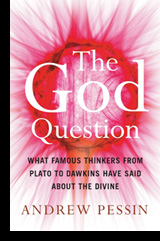 Andy Pessin, my mentor as an undergrad philosophy student back at Kenyon (English/Philosophy double major, with concentrations in creative writing and what was essentially multimedia design) has two new books out! The first, The 60-Second Philosopher: Expand Your Mind on a Minute or So a Day, is basically a collection of short thought exercises designed to get you thinking like a philosopher – which should prepare you nicely for the second book, The God Question: What Famous Thinkers from Plato to Dawkins Have Said About the Divine, which tackles one of the greatest enigmas of human history. No small project, this. Andy Pessin, my mentor as an undergrad philosophy student back at Kenyon (English/Philosophy double major, with concentrations in creative writing and what was essentially multimedia design) has two new books out! The first, The 60-Second Philosopher: Expand Your Mind on a Minute or So a Day, is basically a collection of short thought exercises designed to get you thinking like a philosopher – which should prepare you nicely for the second book, The God Question: What Famous Thinkers from Plato to Dawkins Have Said About the Divine, which tackles one of the greatest enigmas of human history. No small project, this.
Here’s Andy’s quasi-official description:
THE GOD QUESTION: WHAT FAMOUS THINKERS FROM PLATO TO DAWKINS HAVE SAID ABOUT THE DIVINE
by Andrew Pessin (Oxford, UK: Oneworld Publications, 2009)
A philosophical book aimed at the general reader, The God Question explores the most interesting, important, and sometimes strange things that great thinkers – theists, atheists, agnostics, heretics, rastafarians, pastafarians, you name it – have said about God. Filled with puzzles and conundrums (or is that conundra?), insight, wit, and wisdom (so says the promotional copy, must be true), it has something for everyone: the believer, the disbeliever, and those on the fence with respect to The Question.)
I’ve got both books ordered from Amazon and I recommend you do the same – Andy was one of my favorite professors at Kenyon and was always blessed with the gift of conveying incredibly complex ideas in really interesting, accessible ways. I can’t wait to see what he has to say about God. For more about Andy and his books, check out his website at www.god-question.com.

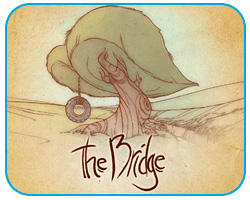 Next up in our series of games from the Spring 2009 semester is The Bridge, another arthouse game from Doris C. Rusch, the product owner of last summer’s Akrasia. This game, a rumination on loss and mourning, is now available to play. You may want to check it out before reading the following reflection from Doris on the game’s creation – there are spoilers ahead! – but definitely do come back and give the following essay a read, to share in Doris’ experiences with game design as its own personally reflective, insightful process. -Geoff Next up in our series of games from the Spring 2009 semester is The Bridge, another arthouse game from Doris C. Rusch, the product owner of last summer’s Akrasia. This game, a rumination on loss and mourning, is now available to play. You may want to check it out before reading the following reflection from Doris on the game’s creation – there are spoilers ahead! – but definitely do come back and give the following essay a read, to share in Doris’ experiences with game design as its own personally reflective, insightful process. -Geoff
The Bridge: Game Design as a Tool for Reflection and Self-Exploration
by Doris C. Rusch
The Bridge is a short, single player Flash game, made during the spring semester of 2009 by a team of students. I was the product owner and lead designer of this project. Although I have my doubts regarding The Bridge‘s qualities as a game (for which I take full responsibility), I still regard it as one of the most interesting works I’ve ever done. The focus, however, is on “work” as in “process”, not the result. Working on The Bridge showed me what a wonderful tool for self-reflection and insight game design can be. The following is an account of how using the tools of my craft helped me and two of my team members to more clearly map out our emotional landscapes. Feel free to try this at home!
Guided by Images
Saying I wanted to make a game about “mourning” or the connection between “love” and “fear of loss” would be bullshitting (Def. bullshitting: terminus technicus for making a process appear intentional and focused in hindsight when it actually was not). So, let’s just stick to the dirty truth of how it really went.
It started with an image of an empty tire swing that suddenly bubbled to the surface of my subconscious but never quite made it into the more analytical realm of my mind. The image didn’t come with an explanation, only with an emotional overtone of loss, frustration and hoping against hope. A bit like a cone without ice cream, a tire-swing is a sad affair when it just hangs there without a child on it. Of course, one can take either image both ways: as a promise for future fun or as the memory of past pleasures. In the moment my mind decided to release the tire swing from its swampy depths, I gravitated towards the darker reading of it. But why a tire swing? Why not a more traditional metaphor for loss, such as a gravestone or a couple dressed in black, huddled together under an umbrella?
How I would love to be able to give a clever and coherent explanation now. But I vowed to adhere to honesty and will thus further refrain from bullshitting. The best I can do is share the stream of associations with you that (to me) accompanied the tire-swing metaphor.
Imagine being the one pushing the swing with the child on it. You push, you watch the swing perform the familiar motion, you wait for it to come back to you, and you push it again. The “here-gone” dichotomy strongly resonated with me. The necessity of letting go of the swing in order for it to fulfill its purpose (i.e. provide a pleasurable experience for the child) and at the same time distancing yourself from the precious freight it carries, experiencing a moment of anticipation (anxiety?) before the swing starts to come back, and the relief upon its safe return. But this relief is not really due to the return of the swing, but to the return of the child on it. In most cases, these two things are coupled. While the cycle of the swing will not be interrupted as long as one keeps pushing (what goes up must come down, right?), it is possible to lose a person forever. Fate is less predictable than physics. If the swing is “gone” it will transform into “here” again. A person, once dead, will remain gone. Child and swing – once fused together – are indeed separate entities; they can part ways. The stubborn mind, however, is reluctant to dissociate the two. The swing has always brought the child back, so maybe pushing an empty swing will magically return what has been lost. But some things cannot be changed, no matter how hard we push…
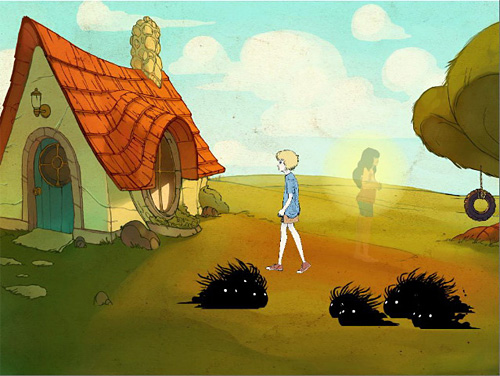 The Initial Idea
The interactive piece I initially envisioned (I wasn’t even going to call it a game!) was strongly inspired by this crude image of an empty tire-swing and the foggy feelings of loss and mourning I associated with it. The player would enter an empty space with nothing but a swing in it and nothing to do but to push it. Pushing the swing would produce faint laughter and the transparent outline of a child would become visible on the swing. The implied goal would be to push until the child materialized completely. In truth, no such thing would be possible, though. The player would have to realize that all her efforts were for naught, that there was no way of bringing the child to life and that the only way to “win” was to accept that and walk away. In order to make this (emotionally) difficult for the player, every time she stopped pushing, the child would fade again, the laughing would grow faint at first, then maybe turn into whimpering (good audio would be required for this or instead of inducing guilt, the whining would create the wish to quickly leave the wretched child behind).
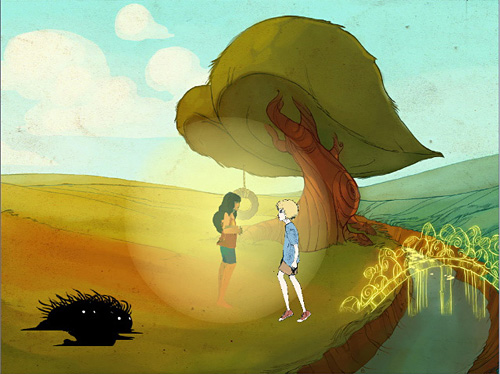 Using “The Tools” for Self-Exploration: A Conversation With The Inner Game Designer
When I talked to my friends Jaroslav and Eric about this initial idea – both very game savvy – they saw the potential for an emotionally compelling experience. However, they thought it should be more “gamey”. I was reluctant at first. The simple tire-swing sequence felt so right that I wanted to do it exactly as I had described above. And then, they popped the Question (yep, it deserves the capital letter): “But what exactly is this about?” Mourning, clinging, loss, attachment – whatever I said to explain it didn’t quite capture it. I couldn’t put it in words. Since I’m strongly advocating purposeful design, not knowing my own mind was a problem. How can I purposefully create an experience for someone else if I don’t understand my own feelings?
This had to change. I decided to follow my friends’ advice and make it more “gamey”. Because although the game itself can be ambiguous and allow multiple interpretations, coming up with the rules forces the designer to be precise and concrete. I started to explore what I already had in mind in terms of game elements. Here’s a rough transcript of the dialogue I had with what I call my “Inner Game Designer” (IGD):
IGD: What exactly is the GOAL?
Me: To “let go”.
IGD: A goal without CONFLICT makes for a lousy game. So what is the conflict? What makes “letting go” difficult?
Me: Attachment makes it difficult.
IGD: What creates attachment?
Me: Hm…love?
IGD: So, the way to overcome attachment is to overcome love?
Me: I don’t think so. That would be terrible. Love is important.
IGD: Are you sure it is love, then, that bothers you? Maybe it’s fear?
Me: Oh yeah? Well, what do YOU know?
IGD: I’m you, remember?
Me: Attachment and fear. Fear of losing love. You cling because you are afraid…
IGD: What exactly are you afraid of?
Me: Haven’t I just said that? Afraid of losing love! Isn’t that obvious?
IGD: Aren’t you a bit negative?
Me: Don’t play the Eliza trick on me!
IGD: All right, I’m sorry – couldn’t resist. Seriously now, why would losing love be bad? It sounds like love serves a purpose.
Me: It protects…makes you feel good.
IGD: And since you don’t want to lose what makes you feel good, love itself creates fear. It is both the curse and the cure, it seems.
Me: That’s right. Fear creates clinging, you want to stay close to the “love object”.
IGD: May I point out that you don’t seem to have internalized love? It’s this outside thing on which you depend. That attitude will always kick you in the butt.
Me: You’re my inner game designer, not my freaking therapist.
IGD: Seems like pretty much the same thing to me…
I will spare you the rest of the conversation because it involved giant flying puddings and the monster with 14 toes, neither of which had any relevance to The Bridge. But you can see how the concept had dramatically evolved from the simple initial idea to a system that tackles the mechanisms of a certain kind of love and the problems that come with it. What was still lacking was an idea of how to overcome those problems, to get “unstuck” and break the pattern. Obviously, you had to fight your fears so you weren’t dependent on your love object anymore and could love it in a more selfless way. And then what?
It was at the speakers’ party at this year’s Game Developer’s Conference in San Francisco when Trey (the game’s producer) and Jamie (code and animation) approached me with the words: “we have been thinking.” Sitting in front of cocktails called “The Game Designer” or “Achievement Unlocked”, they spoke to me of closeness, emancipation and sacrifice in a serious and insightful way. We pondered how the game could end. We knew the goal, we had grasped the conflict. Now we had entered the final stage of the process: finding a solution. What happened when you killed the monsters that represented your fears? What happened to the girl that represented your love object? What exactly would “letting go” look like? It was Jamie who dumped the solution in my lap: every monster you killed would help form a bridge across the river that divided the playground (the game’s main space) from the untended field (representing an unknown future). I loved the symbolism that the road to a better future was paved by one’s conquered fears. We further entertained the rather disturbing idea that the girl would sacrifice herself to complete the bridge, that her (self-inflicted) death would produce the last missing piece. We let this sink in. Nah…no good, since it would undermine the emancipation process which depends on taking responsibility for one’s actions. So, maybe the player had to kill the girl before the bridge solidified? No, no, no! Not reconcilable with the idea of selfless love! We finally agreed that to win the game, one would have to kill all the monsters in the playground and refrain from “reclaiming” the girl on the tire-swing. The bridge would solidify upon the death of the last monster and one could cross it. Crossing the bridge would “free” the girl (she’d dissolve into a could of particles). This should not mean that one abandoned love itself, but had overcome functionalizing it.
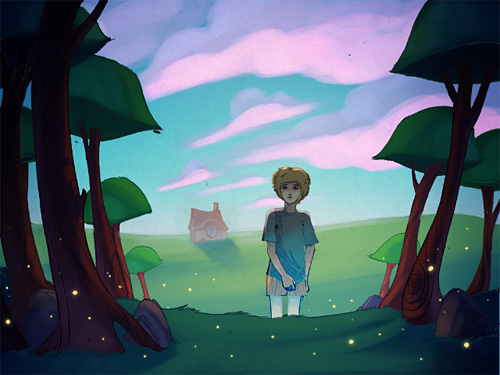 The True Reward Was The Journey
My team had an equivalent of two 40-hour work weeks to develop this game. This is not a lot of time, but they did an amazing job. Our biggest problem, however, was that the theme was so personal. If a project is too big, you can always scope it down. But if you are very invested in the concept you want to convey, to do it justice and get it right, the problem starts much sooner than scope. It starts with understanding what exactly you want to model.
We tried something big with The Bridge. Too big, maybe, for the given timeframe. I felt bad for a while after our last official work session, because how can you close the book on “love” and walk away feeling like you’ve accomplished anything? Also, eighty hours of development time do not leave a lot of room for tweaking and polishing and thus many of the ideas in the game are still latent and could be communicated to players more clearly.
But then again, I have learned a lot. The process of designing this game made many things apparent to me, helped me map out some of my emotional landscape. In that regard, The Bridge was a huge success. It confirmed my belief that while making profound games that tackle the human condition is a worthy goal which I will keep pursuing, game design itself can be a wonderful tool for insight that greatly enhances our understanding of ourselves.

Well, I’m back from my recent travels – and utterly exhausted. I’ve been trying to catch up on my sleep for a week, but that doesn’t seem to be actually working. Last night, for example, I slept for a good eight hours and still woke up exhausted. This is disturbing, as I have a long list of requests from friends, clients and fellow travelers that I’m trying to get to (250+ such requests in my inbox greeted my return Stateside with the pitiless chirping of tiny flaming hell-birds) and this lack of energy, simply put, ain’t helping. If yours is one of these requests that I’ve not managed to get to yet, I deeply apologize – it’s entirely likely that it’s one of the ones that requires some Serious Thought, or perhaps some Intense Labor. Either way, I’m doing my best to get to your request in a timely manner. Please stand by.
In other news, I’m finding myself somewhat befuddled by today’s death of Michael Jackson. After Ed McMahon and Farrah Fawcett, my fiancée and I were discussing how this is sort of how it goes, and how weird it will be when Brad Pitt dies, et cetera et cetera, but Michael Jackson dying is something truly beyond the pale. Michael Jackson dying is like Mickey Mouse dying. The King of Pop was less a person and more of a persona, perhaps; you can almost hear Obi-Wan Kenobi sadly shaking his head over one of Michael Jackson’s surgeries and intoning, “He’s more cartoon than man now.” ‘Iconic’ doesn’t begin to describe it. It’s just… Odd. True, the Michael Jackson of recent years had devolved into something truly bizarre, and especially his recent fiscal scenario was a completely befuddled mess, but still… My friend Derek also adds another strange insight into the whole fiaso: “Oh, I forgot. We’re not supposed to speak ill of child molesters who bought off witnesses once they’re dead. Right.” Whether the whole lawsuit was trumped-up or paid off is still a matter of debate (the Wikipedia page on the 2005 case of The People of the State of California v. Michael Joseph Jackson notes that all charges were dropped and the plaintiffs seemed to be a bizarre, lawsuit-happy bunch) but D has a point – Jackson certainly does leave behind an unsettling, surreal biography.
Still… Still, it feels weird to have him gone. I was never a Michael Jackson fan, to be honest – that is to say, I can sing along to “Billy Jean” and “Thriller” when they come on the radio, but I’ve never owned a Michael Jackson album. Growing up in the 1980s, I had an odd distrust of Michael Jackson and Madonna alike, perceiving both of them as weird. I always preferred U2 or R.E.M., Duran Duran or Genesis, even especially more out-there acts like Information Society. Michael Jackson and Madonna were, to me, oversexed sideshow acts that somehow held the entire world in thrall, and I wasn’t interested. Looking back, Information Society may have been even more bizarre than Michael Jackson, but any techno band that sampled Star Trek (this video of “Repetition” is way better) won points in my book – and, for extra nerd points, I discovered InSoc on the CD+G sampler that came with the Sega CD add-on I bought for my Genesis. Aw, yeah. Old-school nerdery, right there.
Like I said, I’m exhausted and now I’m rambling. I’ll leave with a quote from Kevin, another of my friends: “I am speechless. A deeply troubled man, sure but what an unbelievable talent… In spite of the rest, he was capable of greatness.” If you get a chance, check out the eulogy Roger Ebert wrote for Jackson (and Kevin referred me to), “The Boy Who Never Grew Up“. “Michael Jackson was so gifted, so lonely, so confused, so sad,” Ebert writes. “He lost happiness somewhere in his childhood, and spent his life trying to go back there and find it.”

|


